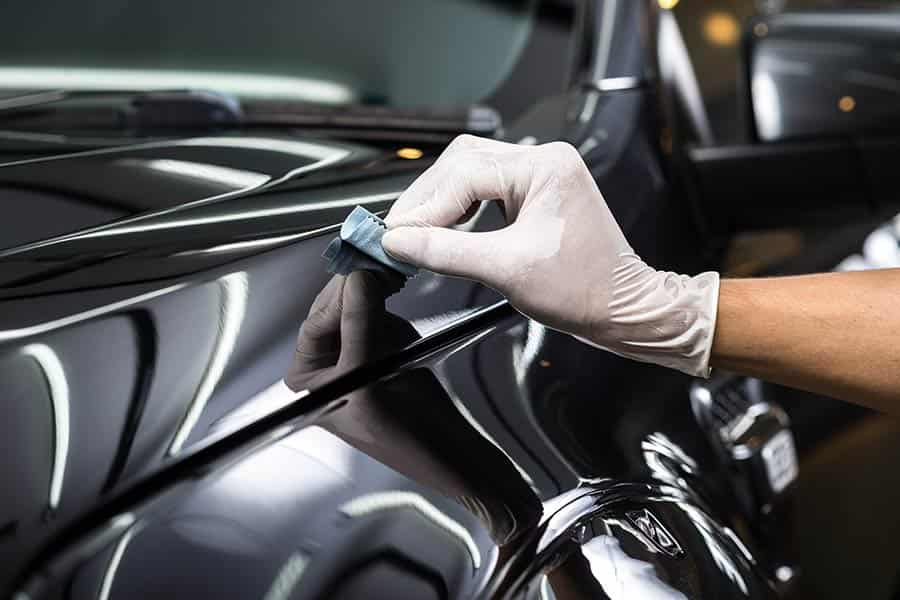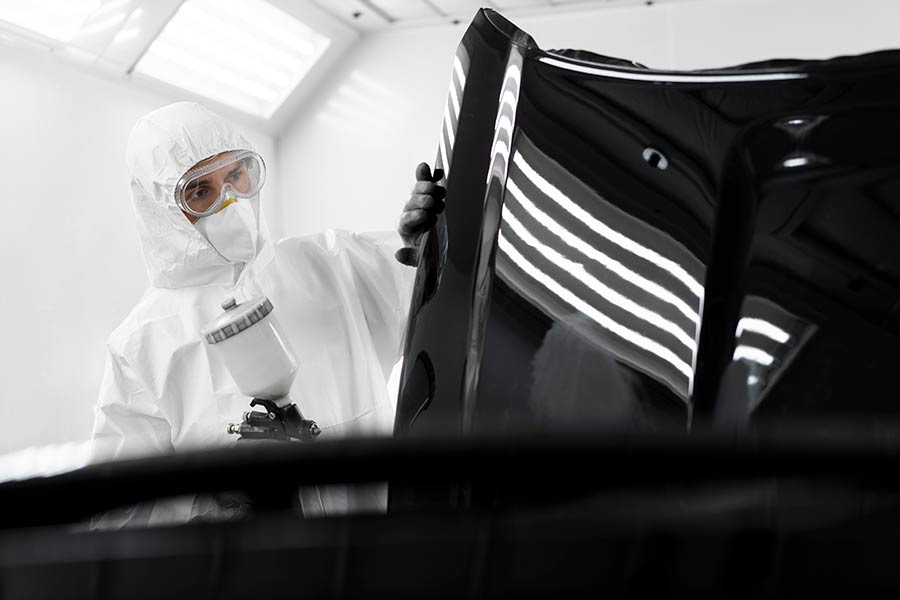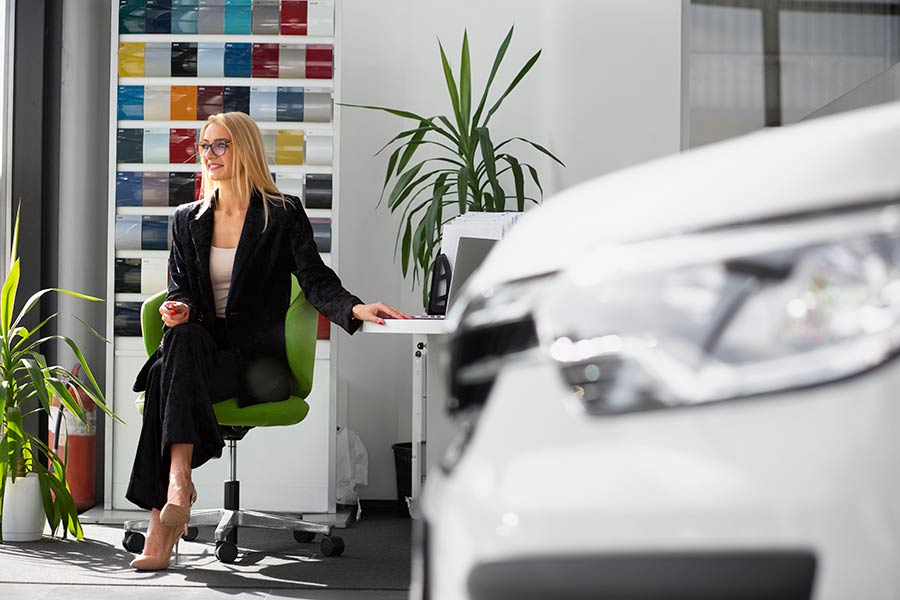Over 90% of car owners agree that maintaining their vehicle's appearance is as important as its performance. Ceramic coating stands out as a revolutionary solution, offering unmatched protection against environmental hazards while keeping cars looking glossy and new. This post dives into the benefits of ceramic coatings, including Cerakote, debunking myths and highlighting why it's a game-changer for car enthusiasts and everyday drivers alike, with its ability to protect cars beyond traditional polishes. From its durability to ease of maintenance, we'll explore how this innovative treatment can extend your vehicle's lifespan and preserve its showroom shine.
Key Takeaways
- Ceramic coating offers a high level of protection for your car's paint, making it worth considering for anyone wanting to maintain their vehicle's appearance.
- Before applying ceramic coating, it's crucial to thoroughly prepare your car's surface to ensure the best results; this often involves a detailed cleaning and possibly paint correction.
- The application process of ceramic coating requires precision and patience; consider hiring a professional for optimal outcomes.
- While ceramic coating provides excellent protection against environmental damage, combining it with paint protection film can offer the ultimate shield for your vehicle.
- Investing in ceramic coating not only helps in keeping your car looking new but also increases its resale value by protecting the paint from wear and tear.
- Regular maintenance of the ceramic coating is essential to prolong its life and effectiveness; follow the manufacturer’s care instructions closely.
Understanding Ceramic Coating
Basics Explained
Ceramic coating is a liquid polymer that people apply to various surfaces for protection. It bonds with a vehicle's paint, forming a protective layer on top. This layer, known as graphene ceramic coating advanced, is different from traditional waxes and polishes because it's more durable and long-lasting among ceramic coatings products.
Traditional waxes provide a temporary shine and protective coat. However, ceramic coatings, especially when infused with advanced ceramic technology, offer a more permanent solution. They chemically bond with the paint, ensuring that the ceramic coatings, including ceramic car coating, polishes, and wax, are not easily washed away or broken down by environmental factors.
Benefits and Uses
Ceramic coatings are versatile. They can protect cars, boats, and even home surfaces. One of their main benefits is protection against environmental damage like UV rays and acid rain. These coatings also enhance the appearance of surfaces by adding a glossy, shine and wax finish.
The use of graphene in some advanced ceramic coatings has pushed the boundaries further. Graphene ceramic coatings' advanced formulations offer superior durability, shine, and resistance compared to traditional wax options.
Advantages for Vehicles
For vehicle owners, ceramic coatings mean long-term cost savings, shine, and less need for wax. There's less need for frequent waxing and detailing because these coatings are so durable. They also improve a vehicle's resistance to scratches and contaminants.
Another major advantage is the ease of cleaning. Dirt and grime slide off more easily from surfaces treated with ceramic coating. This makes maintaining the vehicle's appearance with ceramic coatings less labor-intensive and more efficient.
Preparing for Ceramic Coating
Surface Prep Steps
Before applying any ceramic coating, it's crucial to prepare the surface properly. This starts with a thorough wash to remove all dirt and grime, preparing the surface for ceramic coatings. It ensures that no particles interfere with the adhesion of the coating.
Next, a clay bar treatment is essential. It eliminates fine contaminants that washing can't remove. This step leaves the surface smoother and ready for further preparation, including ceramic coatings.
Polishing is the final prep step. It removes any remaining imperfections, making sure the surface is completely smooth for ceramic coatings. Only then is it ready for the ceramic coating application. This process guarantees optimal adhesion and finish of the ceramic paint coating.
Choosing Materials
Selecting the right ceramic coating requires considering durability, longevity, and price. The market offers various options from ceramic spray coatings to more durable solutions like graphene ceramic spray coating advanced.
Consider your vehicle's usage and exposure to elements when choosing a ceramic coatings. Cars exposed to harsh conditions may need a more robust solution like cerakote or chemical guys hydroslick.
Consulting with professionals can provide recommendations tailored to specific needs. They can suggest the best ceramic car coatings based on experience and expertise.
Tools Required
For application, you'll need certain tools:
- Applicator pads
- Microfiber towels
- Gloves
A well-lit, clean, and dust-free workspace is vital for applying coatings effectively. Finally, have isopropyl alcohol on hand for a final prep wipe down before applying ceramic coatings. This ensures no residues are left before applying the ceramic car coating.
Application Process
Step-by-Step Guide
After preparing the surface, it's crucial to follow a step-by-step guide for applying ceramic coating. First, ensure the area is clean and dry. Begin by applying the coating in small sections to maintain control over the uniformity of the application. It's vital to use a microfiber cloth or applicator pad for applying ceramic coatings.
Next, allow the coating to bond with the surface according to the manufacturer’s recommended curing time. This can vary but usually ranges from a few hours to a day. Remember, working in small sections and constantly checking for an even layer will yield the best results. Following manufacturer instructions closely ensures maximum durability and effectiveness of the coating.
Professional Services
While DIY application is possible, hiring professionals offers guaranteed quality and often comes with warranty options. Professionals have the tools and expertise to ensure an even application and can spot potential issues before they become problematic.
Comparing DIY to professional application highlights differences in time, effort, and skill level required. For many, the convenience and assurance of professional services outweigh the cost.
Before choosing a service provider, it’s wise to research their reputation through customer reviews. Opting for a reputable service provider guarantees that your vehicle receives top-notch treatment.
Paint Protection Film Insights
PPF Basics
Paint Protection Film (PPF) acts as a guardian layer over your car's paintwork. Unlike ceramic coating, which bonds with the paint at a molecular level for a glossy finish, PPF offers a physical barrier against scratches and impacts. It is most often applied to high-impact areas such as front bumpers and hoods. These spots are prone to damage from rocks, road debris, and bug splatters.
PPF and ceramic coatings serve different purposes. While both protect the paint, PPF focuses on shielding against physical damage, where ceramic coatings enhance durability against chemical stains and water spots.
Cleaning and Maintenance
To keep PPF in top shape, wash your car regularly with pH-neutral soaps. This practice maintains the film's integrity without harming the underlying paint job. Avoid harsh chemicals that can break down both the ceramic layer and the protection film.
Periodic inspections are crucial to spot any lifting or peeling at edges. These signs indicate it might be time for touch-ups or reapplication to ensure continued protection of your vehicle's paintwork.
Extending PPF Life
Dirt and grime build-up can wear down PPF over time. Regular cleaning prevents this deterioration, keeping the film clear and effective. Parking your vehicle in a garage or under cover reduces its exposure to harmful elements like sun, rain, and snow.
Applying sealants designed for PPF not only extends its life but also enhances its appearance by adding an extra layer of shine. Such maintenance steps ensure your car’s paint remains pristine for years to come.
Protecting Your Investment
Avoid Chemical Damage
Bird droppings, tree sap, and acidic rain pose real dangers to your vehicle's exterior. These substances can leave permanent marks if not cleaned promptly. It's crucial to remove any contaminants as soon as they're spotted to prevent damage. For added safety, applying a sacrificial layer on top of the ceramic coating can offer extra protection. This layer acts as a barrier, keeping the underlying coat safe from chemical stains.
Manage Spills and Scratches
Even with a ceramic coating, spills can be a problem if not handled carefully. To avoid scratching the surface, it's important to clean any spills gently using the right techniques and tools. For minor scratches, specific repair kits designed for ceramic-coated surfaces can be effective. However, deeper scratches or damage might require a professional assessment to ensure proper repair and maintain the integrity of the coating.
Heat and Sunlight Protection
One of the standout benefits of ceramic coating is its ability to reflect UV rays, significantly reducing paint oxidation. This feature helps in keeping your car's color vibrant for longer. Despite this protection, minimizing prolonged exposure to direct sunlight is advisable to preserve the coating's lifespan. In areas with high sun exposure, periodic reapplication of the coating ensures consistent protection against heat and UV damage.
Closing Thoughts
Ceramic coating offers a top-notch shield for your car, blending durability with stellar aesthetics. You've seen how it works, from prep to application, and even peeked at paint protection film. This isn't just about keeping your car shiny; it's about safeguarding your investment against the elements. Think less maintenance, fewer worries, and a ride that turns heads. Whether you're a car enthusiast or simply someone who appreciates the value of maintaining your vehicle's appearance and integrity, ceramic coating is a smart choice.
Ready to give your car the protection it deserves? Don't wait for the paint to dull or for damage to set in. Seek out a professional ceramic coating service today and witness the transformation. Your car is more than just a way to get around—it's a reflection of you. Protect it well.
Frequently Asked Questions
What is ceramic coating?
Ceramic coating is a chemical polymer solution that, when applied to a vehicle's exterior, forms a protective layer. It shields the paint from various types of damage, including UV rays, scratches, and chemical stains.
How do I prepare my car for ceramic coating?
Ensure your car is thoroughly cleaned and any surface imperfections are corrected. This might involve decontamination, polishing, and removing any previous wax or sealant layers to ensure the coating properly bonds with the vehicle's paint.
What does the application process of ceramic coating involve?
The application involves applying the liquid polymer by hand over the vehicle's exterior. It requires precision and patience as it bonds with the paint to create a hard, protective layer. The process can take several hours depending on the vehicle size and condition.
How does ceramic coating compare to paint protection film?
While both offer protection against external damages, ceramic coating provides a glossy finish and easier cleaning benefits due to its hydrophobic properties. Paint protection film offers thicker material that absorbs impacts better but lacks the self-cleaning feature of ceramic coatings.
Can ceramic coating protect my car’s resale value?
Yes, by preserving the exterior condition of your car through reduced risk of scratches, UV damage, and chemical stains, ceramic coating can help maintain or even enhance your vehicle's resale value.
How long does ceramic coating last?
With proper maintenance and care, high-quality ceramic coatings can last between 2 to 5 years. Factors such as exposure to harsh weather conditions and frequency of washing can affect longevity.
Is it worth getting a ceramic coating?
Considering its long-term protective benefits against environmental damage, ease of cleaning, and potential to preserve your car’s aesthetic appeal and value, investing in a ceramic coating is often considered worthwhile for many car owners.
















